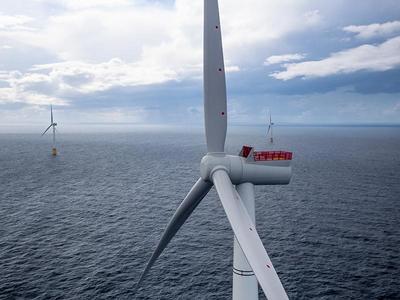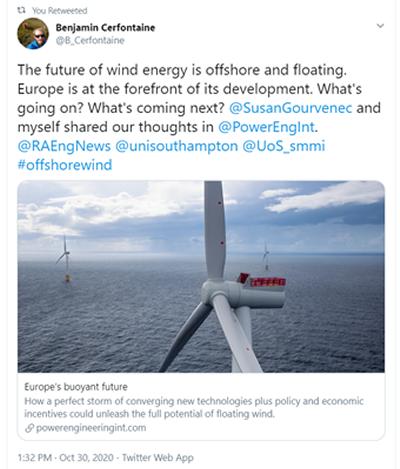Benjamin Cerfontaine and Susan Gourvenec share their thoughts on floating wind in Europe for a special issue of Smart Energy International

The future of wind energy is offshore and floating. Europe is at the forefront of its development. What's going on? What's coming next?
Benjamin Cerfontaine and Susan Gourvenec shared their thoughts on these questions in an invited feature article ‘Floating windpower: Europe’s buoyant future’ for a special issue of Smart Energy International, Power Engineering International.
Harvesting wind energy to generate electricity has become one of the pillars of the transition towards a green and carbon neutral economy. While onshore wind farms represent 89% of the total installed wind capacity in Europe, the cumulative installed capacity of offshore wind (22GW, 11% of total in 2019) has increased by an average 30% yearly over the last decade.
To date, most wind turbines were built in relatively shallow waters (<60m), where they are supported by bottom-fixed foundations, such as monopiles (large steel pipes up to 10m in diameter). Many of the most accessible shallow water locations have already been populated by wind turbines, but the offshore wind sector still has an enormous growth potential. However, 80% of the European wind potential is located in water depths deeper than 60m.
The cost of fixing offshore wind turbines in position in the ocean will increase non-linearly with water depth, as the dimensions of foundation, the amount of steel and the size of the lifting vessels will all increase. Therefore, continuous upscaling of the current design is not sustainable to unlock the remaining offshore wind potential and innovative solutions must be brought to the market.
The potential of floating wind energy has been recognised in Europe and worldwide. While the technical feasibility of some technologies has already been proven, unleashing the full potential of floating wind now requires the convergence of new technologies, adequate policies and economic incentives.
You can read the full article here, or follow Benjamin or Susan on Twitter or LinkedIn (@B_Cerfontaine, @SusanGourvenec).

